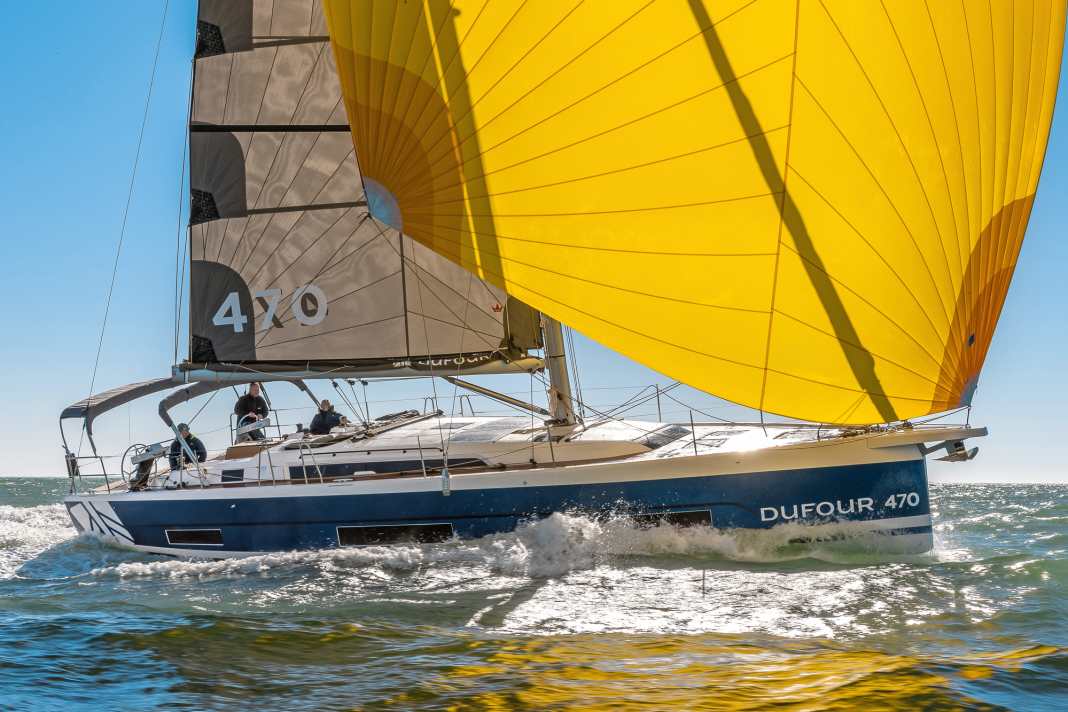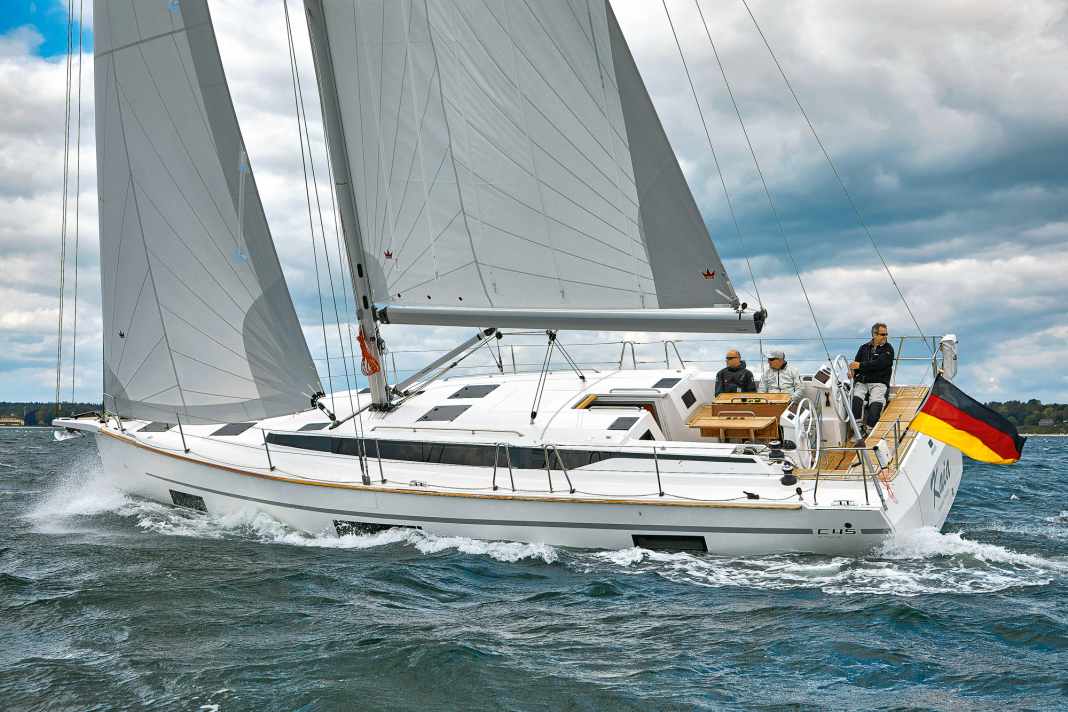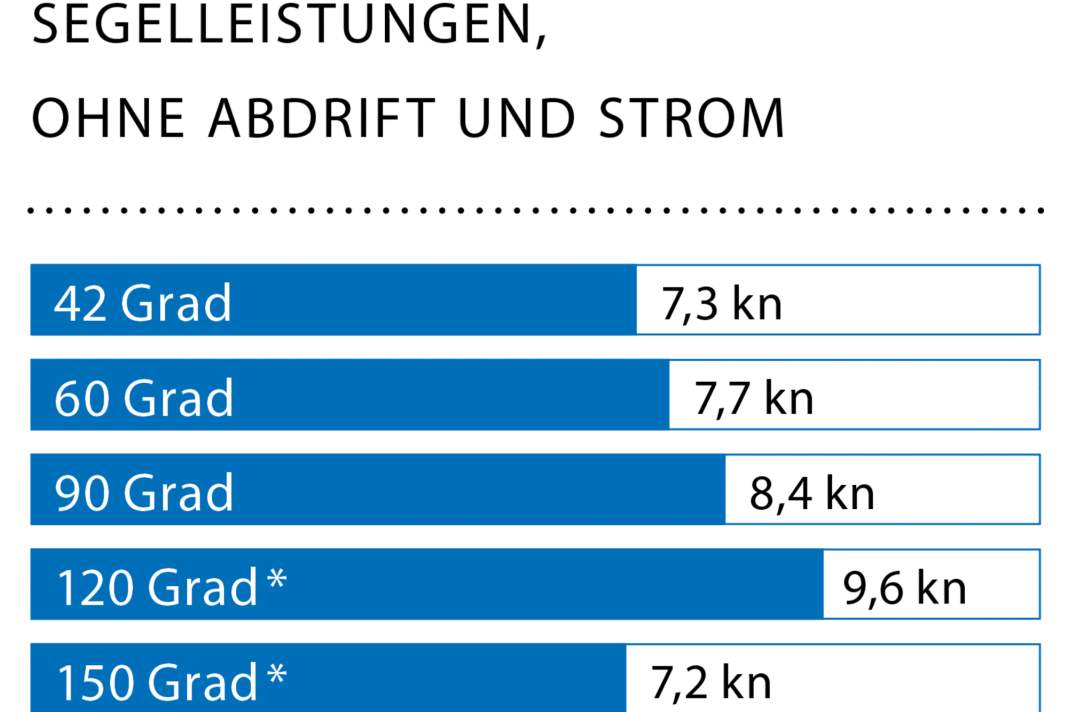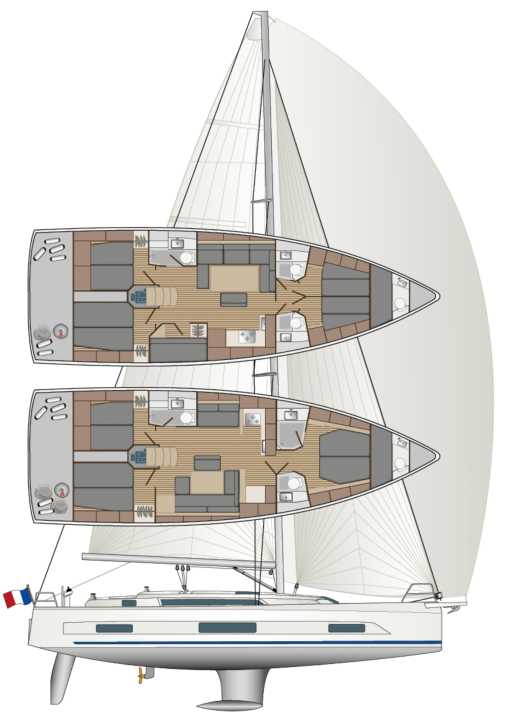Dufour 470 on test: Cruising yacht offers new shapes and even more variants






Today, the market for modern tourers is more extensive and diverse than ever before. Hundreds of manufacturers and brands offer an ever-expanding range that is constantly conquering new niches with innovations and fresh ideas. Anyone interested in buying a new boat has a wide choice.
And yet the market for cruising yachts is also characterised by an obvious concentration. The world's leading brands can be counted on just one hand: There are the two major yacht builders from Germany, Bavaria and Hanse. Then there are the industry giants from France, Beneteau and Jeanneau, which belong to the same group of companies. And then there is Dufour Yachts, also from France. These big five combine the broad foundation of the competition across all length segments from 30 to 60 feet with a lion's share of the overall market.
More variants thanks to more volume: the competition





It is only logical that these manufacturers are fighting hard for sales on the market. If you want to secure your slice of the cake, you have to deliver a well-rounded overall package, offer attractive prices and score points with high quality at the same time. Sportiness and performance are also decisive factors for buyers. But above all, one thing counts: volume, volume, volume ...
Up to the upper limit
A current example of this development is the Dufour 470, a 14-metre tourer that is the first boat to be developed entirely under the new management of the yacht builders in Périgny near La Rochelle. Dufour has been part of the Fountaine Pajot catamaran shipyard since autumn 2018, but remains an independent brand. The 470 now comes as a complete replacement for the 460 Grand'Large, but is almost half a metre longer than its predecessor. The new Dufour measures 13.99 metres from stern to bow.
The hull is also quite wide at 4.74 metres. The aspect ratio (ratio of length to width) is 2.95. For the direct competitors (Bavaria C45, Hanse 458, Oceanis 46.1, Sun Odyssey 490; see page 70), these values are between 3.0 and 3.1, which means that the competitors are slimmer in comparison. The freeboard of the new Dufour is also higher: in the centre of the boat at the shrouds, the hull height measures 1.55 metres. The competitors have a height of between 1.40 and 1.50 metres.
The hull of the 470 is built as a GRP sandwich construction with a foam core using the vacuum infusion process. In the predecessor model 460 Grand'Large, the hull was still fully laminated by hand. The deck of the new model is now an RTM construction. The fabric is placed dry between two moulds and the resin is then injected by vacuum. This construction method guarantees robust structures, low weight and very good insulation, both acoustically and thermally.
The hull is given additional rigidity thanks to two kinks - one as an almost continuous chine above the waterline for more dimensional stability when heeling, the other as a recess for the large and long hull windows. These can thus be installed deeper and are better protected against damage from fenders or when entering the box. In addition, the freeboard is drawn in at the top towards the running deck, which further reinforces the connection between hull and deck and also looks good and modern.
Function in the package
Instead of a long list of options, Dufour bundles the individual equipment components by theme. The basis is the Easy version, which is particularly suitable for use in yacht charters. In this version, the layout is very simple. All halyards, sheets and lines are led aft to the helm stations and the self-tacking jib is standard.
Discerning owners who enjoy active sailing will opt for the Ocean version. This package adds a mainsheet guide with traveller on the coachroof and a functionally separate line guide to the basic version. Halyards and trim lines can then be operated via two winches on both sides of the companionway, while the mainsheet and jib sheet are trimmed aft.
Both sheet channels from the mast base to the companionway and to the helm stations are an integral part of the deck structures and are always provided for in the boat ex works. This has the advantage that the layout can be customised and easily modified, for example after a change of owner.
Finally, the Performance version has a higher mast with Dyneema running rigging, a longer main boom with central mainsheet guide in the cockpit and an overlapping genoa (108 per cent) with line-adjustable hull points. In addition, there are numerous equipment details that experienced sports sailors will not want to do without.
Respect for the performance
The conditions are just perfect for the YACHT test: 15 knots of wind on average, 18 in the gusts, plus clear sunshine - it couldn't get any better. The test boat is the number 1 in the Ocean version with a performance upgrade (fully battened mainsail, overlapping genoa) in the form of Epex membrane sails from Elvstrøm. The boat likes the demanding conditions and works effortlessly and pleasantly dry through the short and quite steep waves in the shallow bay off La Rochelle. The turning angles are 85 degrees and the large Dufour manages a speed of 7.3 knots. Even taking into account the upgraded sail wardrobe, these are very good performance values. For the course back, a large gennaker is available on the test boat, which is hoisted up to the masthead. With this, the Frenchwoman, which weighs a comparatively heavy 13.2 tonnes, occasionally logs around 10 knots of speed.
Designer Umberto Felci, who has worked for Dufour Yachts for many years, remains true to his conviction for the latest model generation that two rudder blades generate too much resistance and also offer too little steering pleasure. Despite the enormous width at the stern, he has therefore opted for just one rudder for the new model, although it goes quite low and is built quite far under the boat. The advantages are evident in the wind. Even with deliberately forced heeling, the boat remains controllable and can be steered easily and with a lot of feeling under pressure with a gennaker. Steering is particularly enjoyable upwind, where a light, pleasant rudder pressure gives the helmsman good feedback and makes it easy for him to keep the boat optimally upwind.
Still potential
The helmsman can reach the aft winch for the double-sided mainsheet directly from the helm. However, the winch is mounted too close to the railing wire and the winch handle cannot be fully turned - the shipyard still needs to change this. And the front winch for the genoa is not easily accessible for the helmsman. If the Dufour is optionally equipped with an overlapping genoa, as on the test boat, the single-handed capability is therefore severely restricted or an autopilot is absolutely necessary.
The large, central storage box on the aft deck, which can be ordered as an extra and is primarily a nice sun lounger with cushions, is disruptive to the manoeuvres, especially when changing sides from wheel to wheel.
The rear platform, which is no less than 3.20 metres wide, does not yet appear to be fully developed. When lowering, an additional GRP part folds out to cover and close the gap. A good idea in principle. However, although the moulded part is very light, it is also correspondingly soft and ultimately does not fit neatly into the recess on the platform. This results in quite large gaps with the potential to injure feet, as you are usually barefoot in this area.
Even when closed, the multi-part bathing platform is not satisfactory. It cannot be neatly locked in place when raised, and the components rattle when sailing in the waves. The shipyard is aware of the problem and wants to work on it for the next series.
Open to change
Fit-out versions with three, four or even five cabins and a maximum of four toilet rooms are now the norm in the 45/46-foot class, depending of course on whether the boat goes to an owner or initially into yacht charter. The Dufour 470 offers variance in the foredeck, which can be partitioned off in the centre with a bulkhead. In this case, instead of the spacious owner's cabin with split bathroom, two separate compartments are created at the front, each with a wet room - albeit a rather small one. If the ship is sold from the charter to an owner, the layout with two cabins in the foredeck can be removed again with comparatively little effort.
Customers also have a choice when it comes to the layout of the saloon: layouts with a large, divided galley across the entire width of the boat at the front of the main bulkhead with extensive work surfaces and storage space are available almost in abundance. This layout, which is becoming increasingly popular, is now offered by Dufour for all larger models from 43 feet hull length, and the vast majority of prospective owners seem to opt for it. An alternative is the galley on the starboard side. With this layout, the seating area on the opposite side is moved forwards, creating space aft for another toilet room or an additional Pullman cabin with bunk berths.
The feeling of space is colossal. The design is a success
The interior designers at Dufour-Yachts have created an open and linear, almost loft-like living ambience below deck. Comfort and cosiness are ensured by the thick upholstery of the sofas, the indirect lighting and pleasing details such as the attractive wooden blinds in front of the large, long hull windows. Dufour not only offers different types of wood, surface colours and upholstery materials for the interior, but now also offers matching design packages. As with the test boat, the Europa version is standard, with light-coloured oak wood and light-coloured upholstery. The Boston version is more classic and sophisticated with a dark teak interior. And the Millennium look with less visible wood, lots of light surfaces and bright colours is aimed at younger buyers.
In general, with the change in management, the shipyard seems to have taken another good step forwards in terms of the quality of the fittings. The furniture on the new ship is visibly of a higher quality and more robust with more solid wood components, and the gap dimensions are also correct in all areas. Better fittings have been fitted, and the floorboards are now not only thicker, but also laid more appropriately over a solid plywood blind floor. They also no longer creak under load.
What is missing in the saloon are handrails for the gangway to the front. At sea, you will search in vain for suitable handholds; the wooden mouldings with recessed grips on the superstructure windows are difficult to reach. There are good ventilation options in the cabins. There are also quite large hatches in the ceilings of the heads compartments. However, the ventilation in the large saloon could be better, especially in the galley area by the main bulkhead.
The new 470 carries 100 per cent of the Dufour DNA
Scarce 275000 euros is the price for the Dufour 470 in the basic Easy configuration ex works. This puts the shipyard's new tourer in a comparable range to the competition from France and Germany. A clearly laid out price list and a variety of sensibly put together equipment packages make it easy for buyers to quickly find the boat of their dreams.
Intensive line maintenance has always been the hallmark of Dufour Yachts; hardly any other shipyard presents models at such a high frequency. At the same time, the French yacht builders remain true to their well-known core values under the current management: the new 470 carries 100 per cent of the Dufour DNA. The increase in quality, flexibility and inventiveness shows that a fresh breeze is now blowing through the production halls in La Rochelle.
The measured values for the test of the Dufour 470




The Dufour 470 in detail

Technical data of the Dufour 470
- Designer: Felci Yachts
- CE design category: A
- Torso length: 13,99 m
- Width: 4,74 m
- Draught/alternate..: 2,25/1,75, 2,60 m
- Weight: 13,2 t
- Ballast/proportion: 3,7 t/28 %
- Mainsail: 57,0 m2
- Furling genoa (106 %): 50,0 m2
- machine (Volvo Penta): 44 kW/60 hp
Hull and deck construction
GRP sandwich with foam core. Hull built using the vacuum infusion process, deck built using vacuum injection/RTM
Price and shipyard
- Base price ex shipyard: 404,030 € gross incl. VAT.
- Guarantee/against osmosis: 2/5 years
As of 05/2024, how the prices shown are defined can be found here!
Shipyard
Dufour Yachts, 17180 Périgny (France); www.dufour-yachts.com
Distribution
Dealer network
YACHT review of the Dufour 470
Extremely voluminous cruising boat with a high degree of versatility for a wide range of uses, including charter operations. The sailing characteristics are convincing and the price is fair and competitive
Design and concept
- + Highly customisable
- + Brand loyalty Alignment
- + Smart ideas well implemented
Sailing performance and trim
- + Strong performance on the wind
- + Sensitive rudder
- - Sun lounger aft disturbing
Living and finishing quality
- + Overwhelming sense of space
- + Lots of storage space, easy to use
- - Lack of holding options
Equipment and technology
- + On-board technology neatly installed
- - Aft winches difficult to operate
Video of the Dufour 470
The article first appeared in YACHT 08/2021 and has been updated for the online version.

